Abstract
The aim of this paper is to review the literature on the frequency of cancers to develop priorities for cancer policy, prevention, services and research for black and minority ethnic populations in Britain. Data on populations originating in the Indian sub-continent, and Caribbean and African Commonwealth were extracted from published works. Cancers were ranked (top seven) on the basis of the number of cases, actual frequency, and also on relative frequency (SMR, SRR, PMR). Cancer was found to be a common cause of death. For example, during 1979-83 the proportion of deaths resulting from neoplasms in immigrants living in England and Wales was 11% for Indian and African men aged 20-49, and 19% for Caribbeans. The corresponding proportions were higher among women. The pattern of cancer depended on the method used to assess rankings. On the basis of the number of cases the top 3 ranking cancers for adults were breast, long and neoplasms of the lymphatic system. Based on SMR's cancer of the gallbladder, liver and oral cavity ranked amongst the top 3 for adults. For children the top ranking cancers were acute lymphoblastic leukaemia, central nervous system tumours and neuroblastoma. Variations by ethnic group were more evident in the rankings of relative frequency than in rankings based on numbers of cases. In conclusion, the most common and preventable cancers among minority ethnic populations were the same as those for the general population. The different cancer pattern based on SMRs highlight additional needs and provide potential models for research into understanding the causes of these cancers. Health services policy and practice should ensure that the common and preventable cancers take priority over rare cancers and those for which there is no effective treatment or prevention. Priorities for policy, prevention, clinical care and research should be set separately, for they differ.
Full text
PDF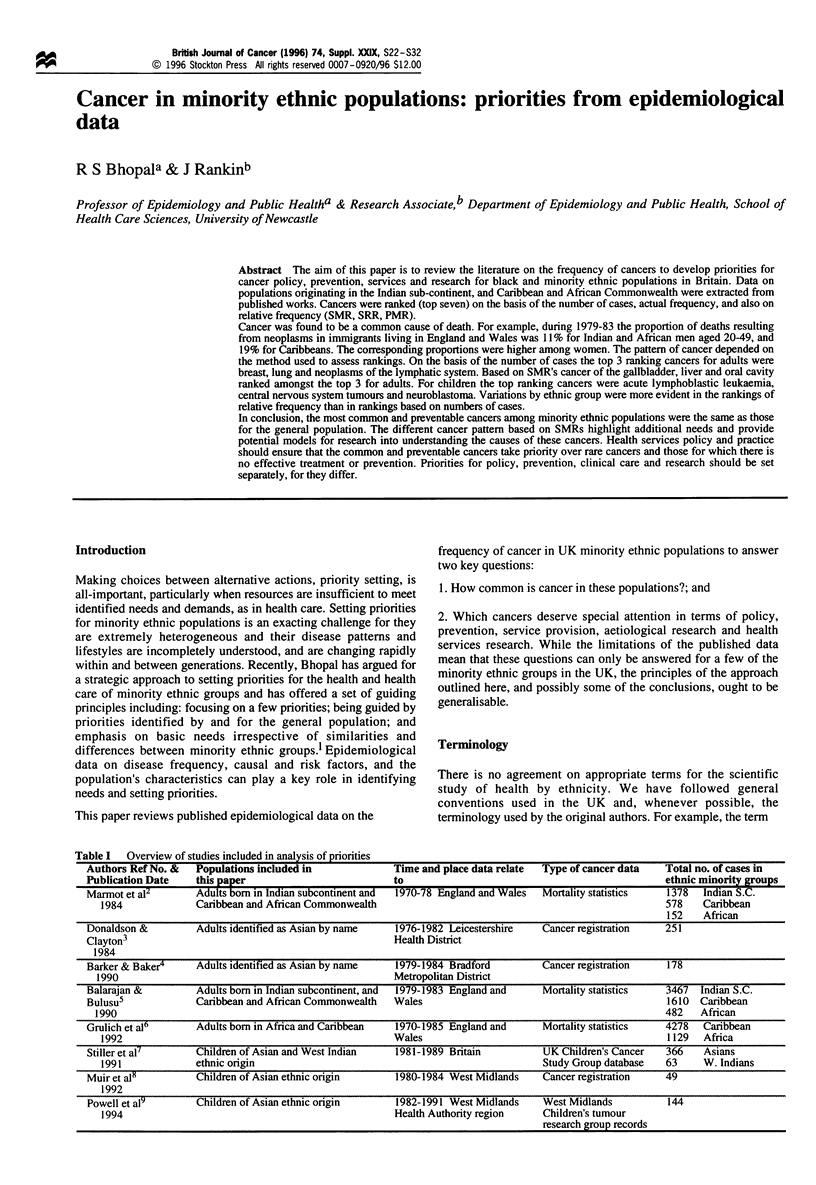
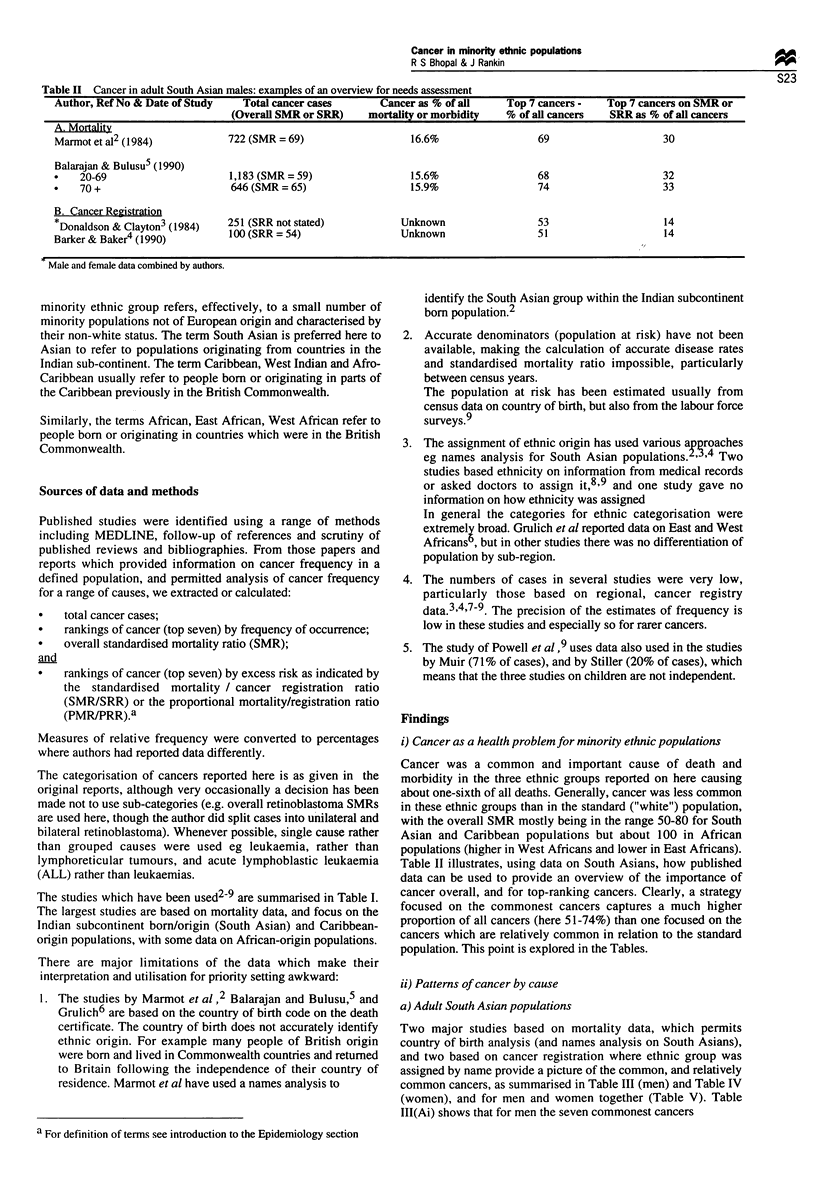
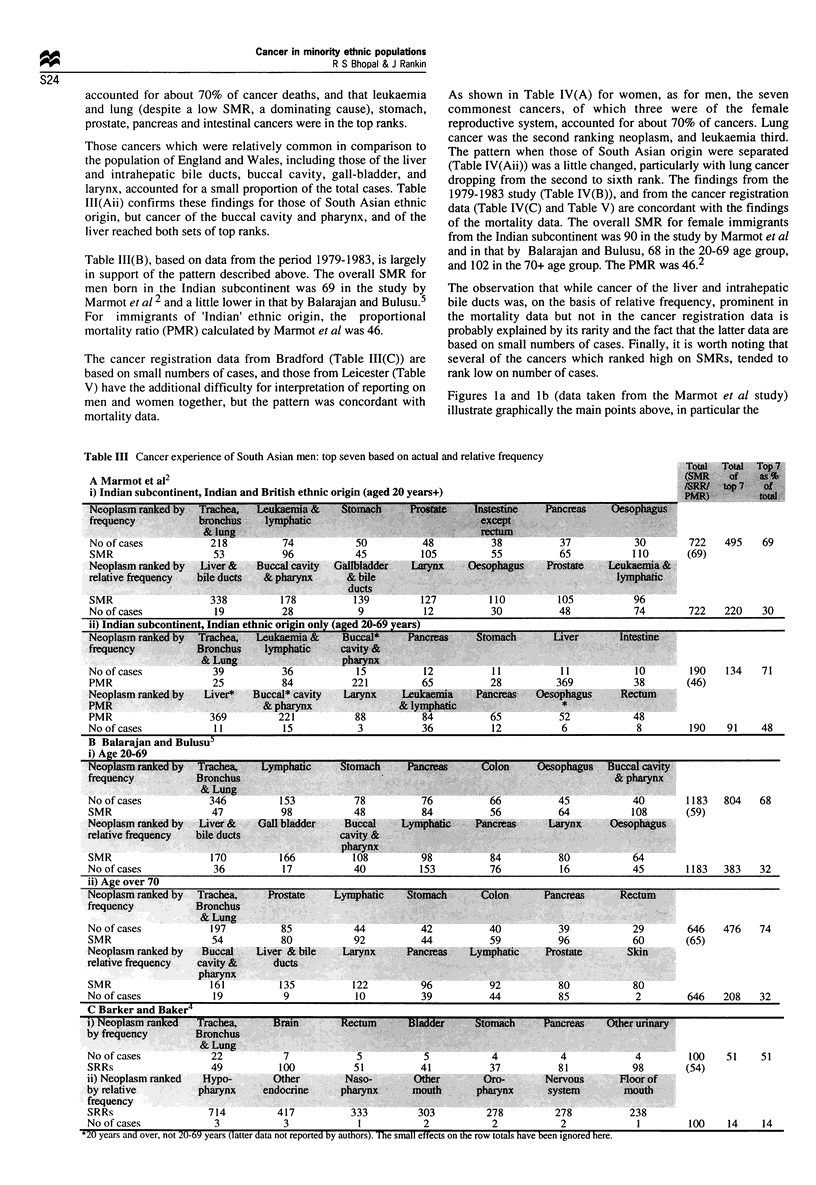
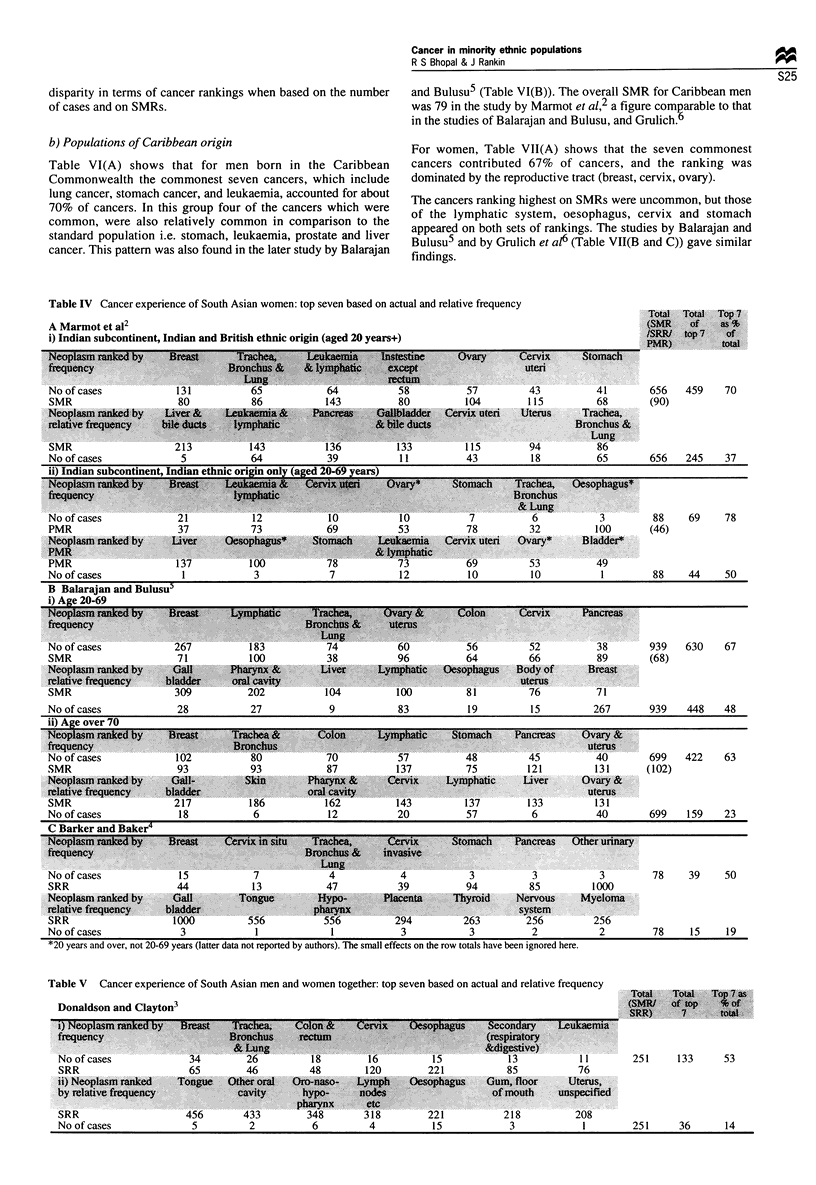
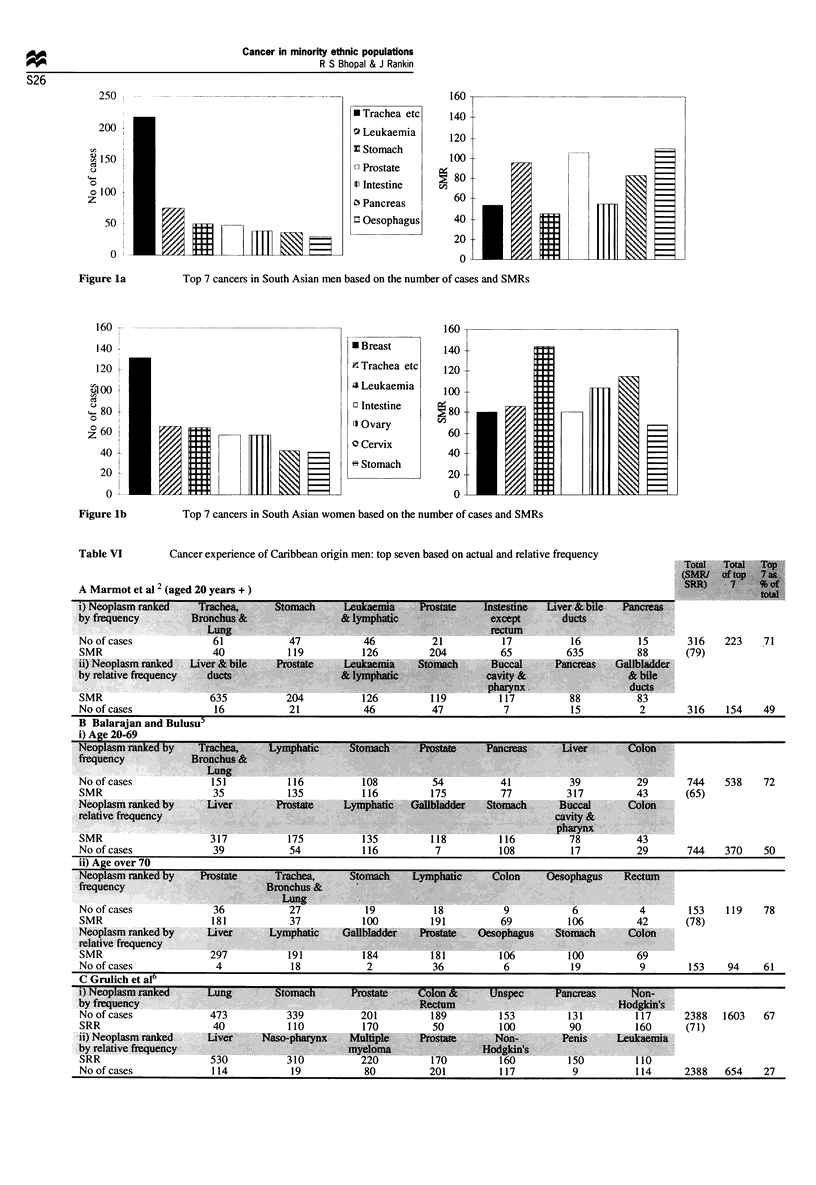
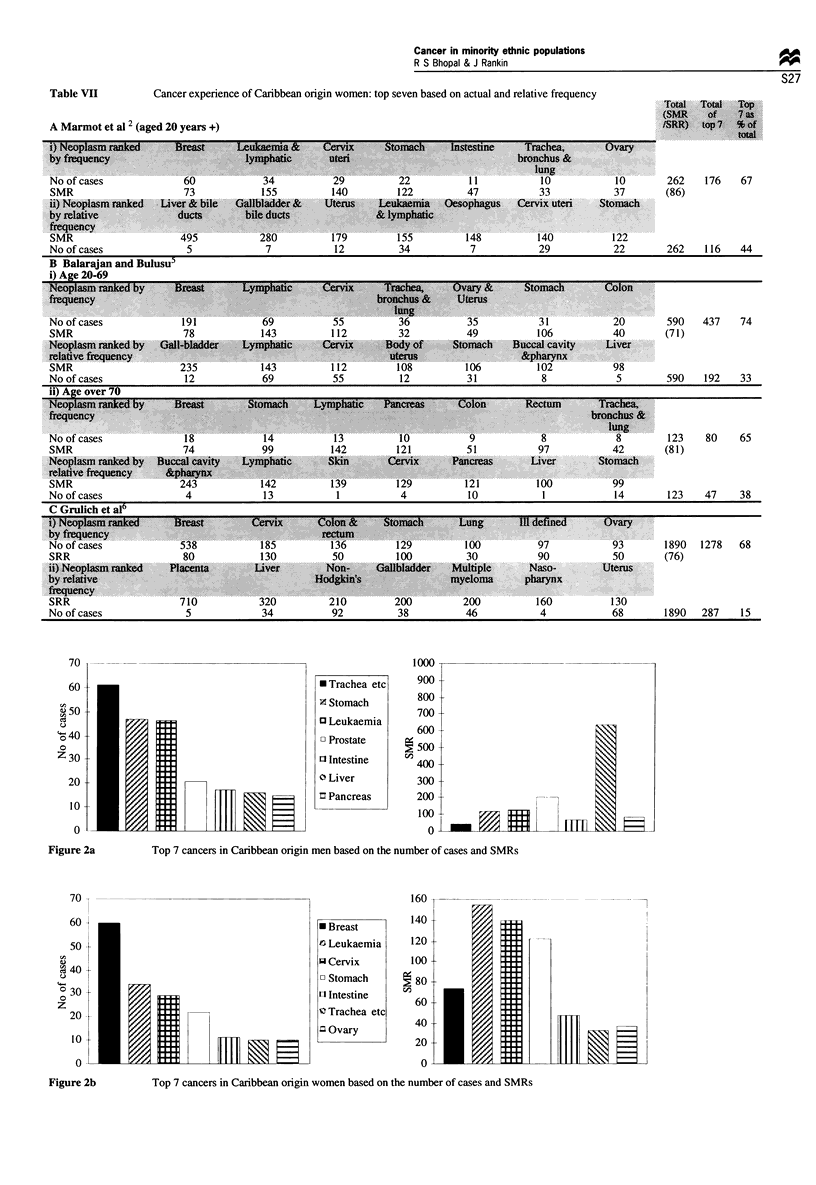
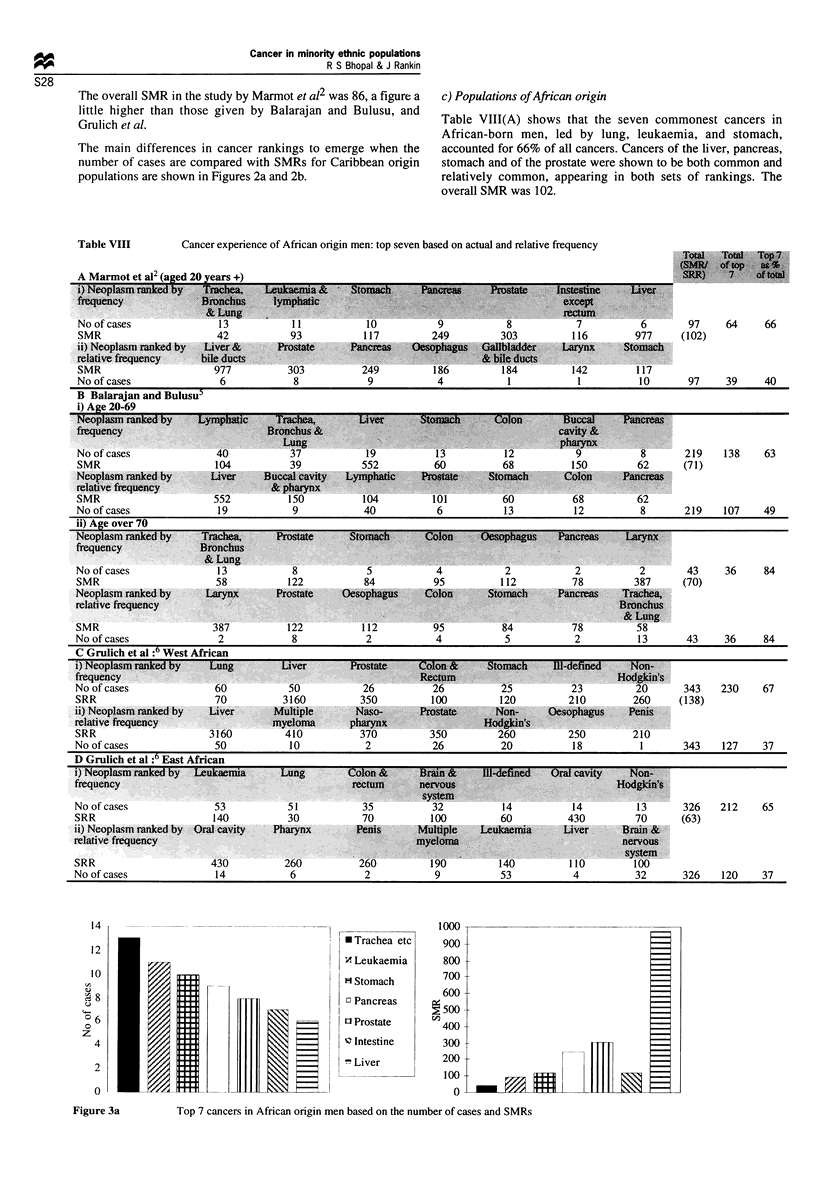
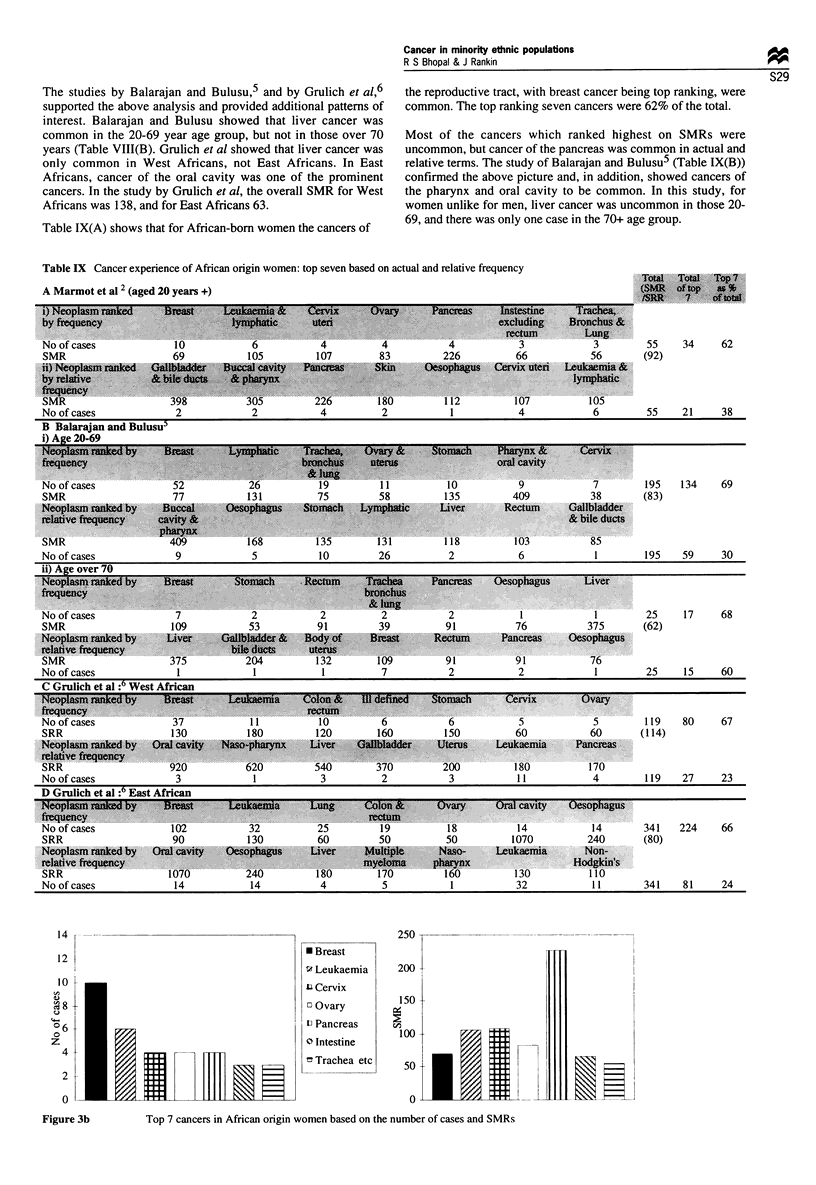
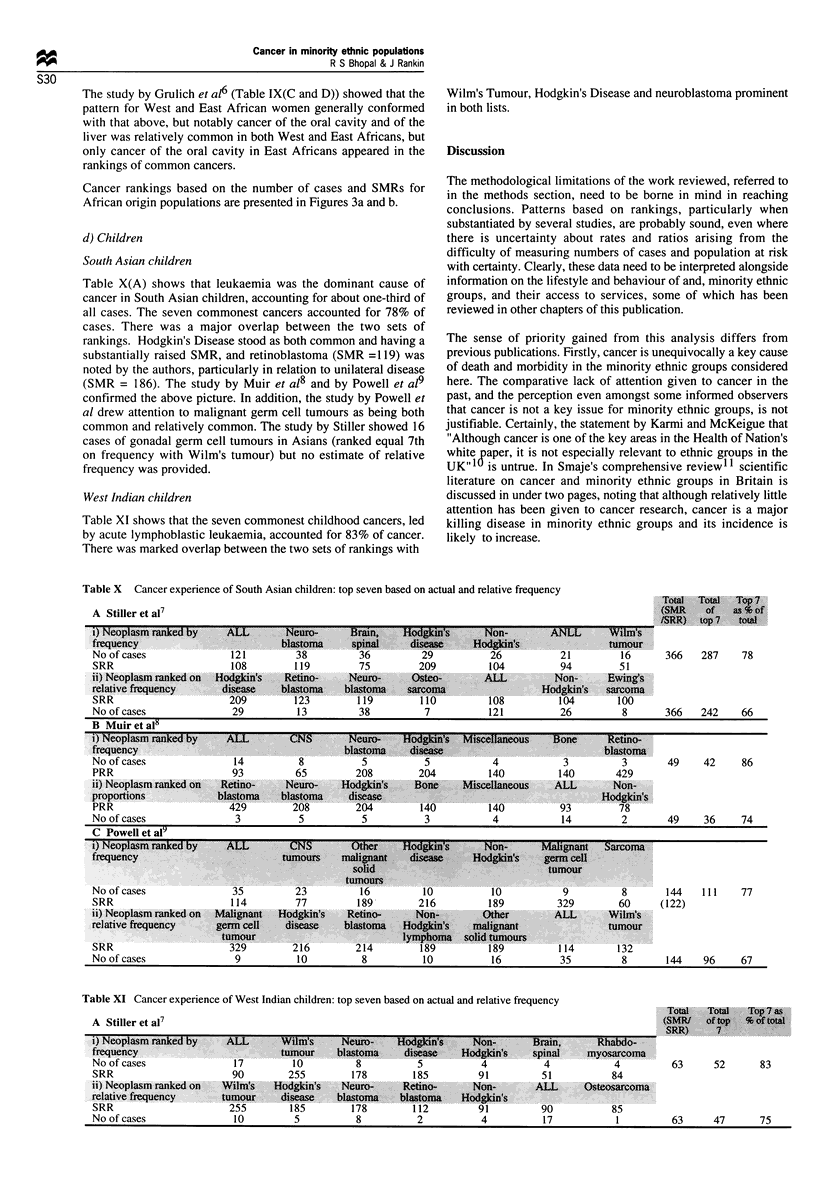
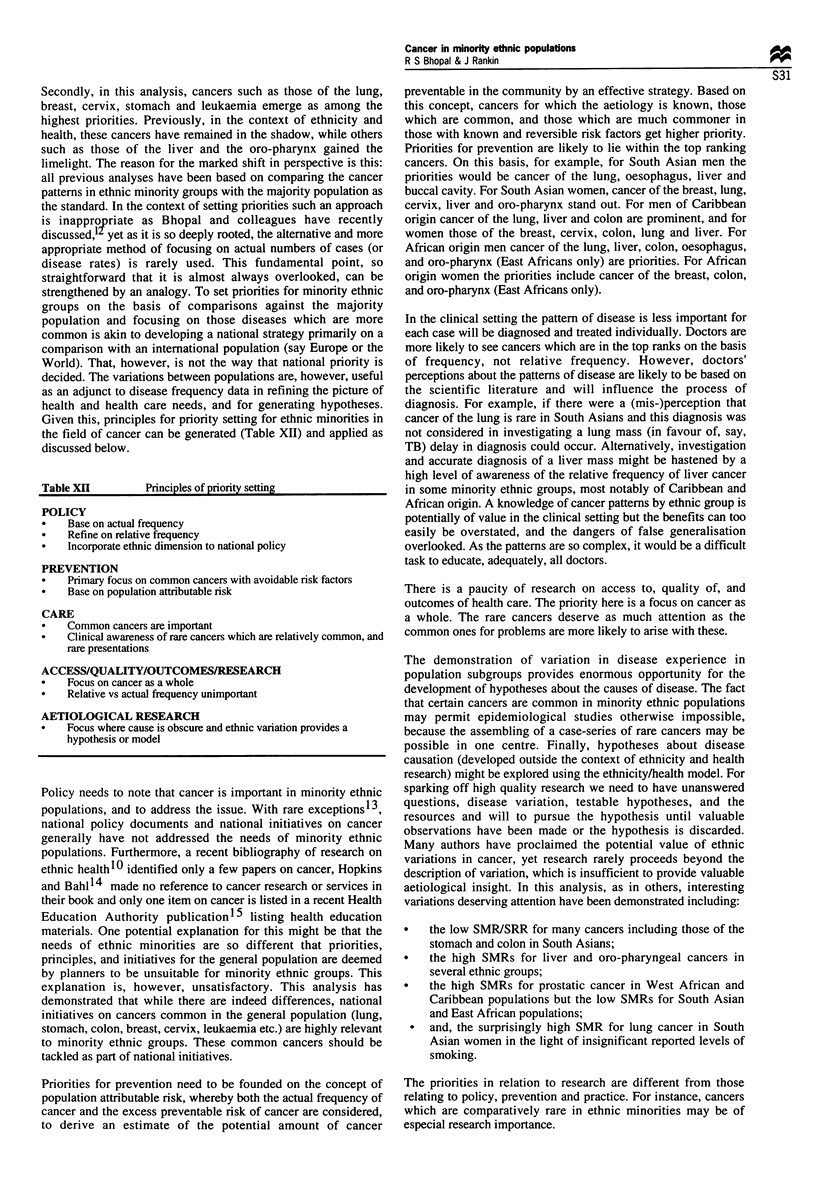
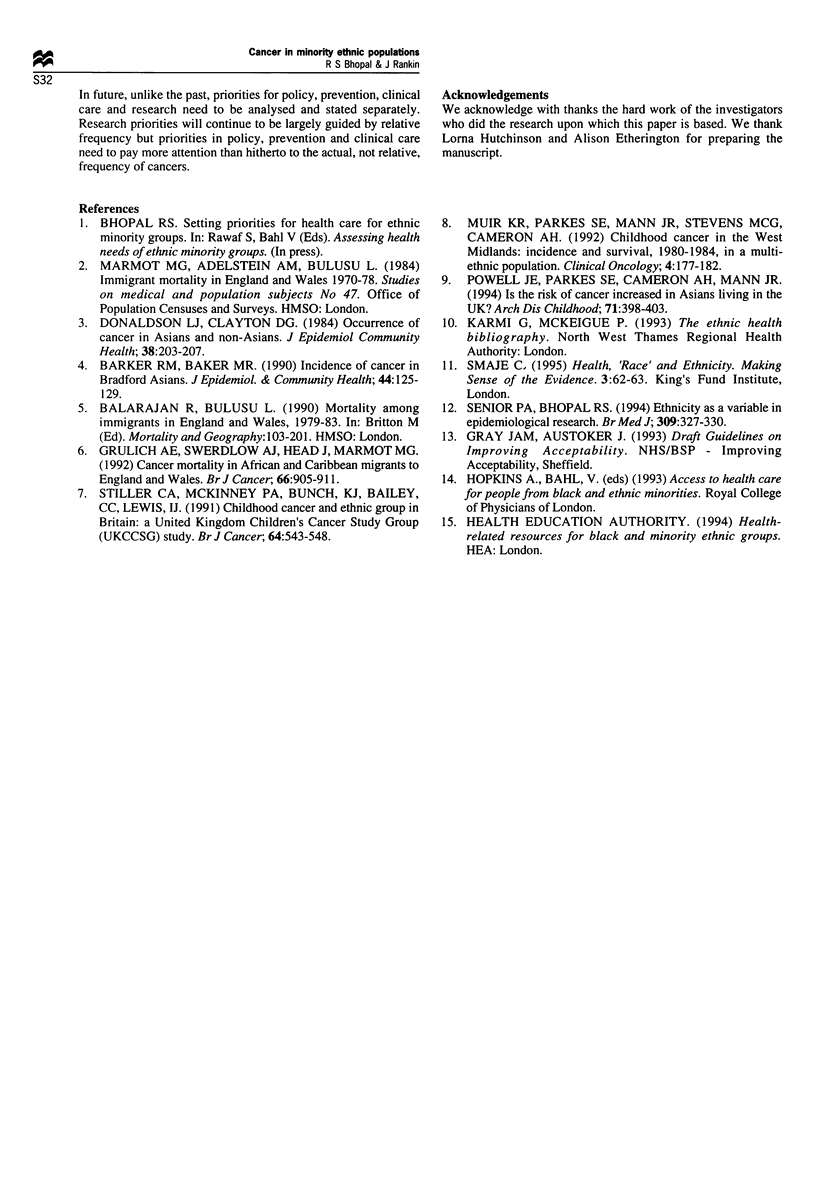
Selected References
These references are in PubMed. This may not be the complete list of references from this article.
- Barker R. M., Baker M. R. Incidence of cancer in Bradford Asians. J Epidemiol Community Health. 1990 Jun;44(2):125–129. doi: 10.1136/jech.44.2.125. [DOI] [PMC free article] [PubMed] [Google Scholar]
- Donaldson L. J., Clayton D. G. Occurrence of cancer in Asians and non-Asians. J Epidemiol Community Health. 1984 Sep;38(3):203–207. doi: 10.1136/jech.38.3.203. [DOI] [PMC free article] [PubMed] [Google Scholar]
- Grulich A. E., Swerdlow A. J., Head J., Marmot M. G. Cancer mortality in African and Caribbean migrants to England and Wales. Br J Cancer. 1992 Nov;66(5):905–911. doi: 10.1038/bjc.1992.383. [DOI] [PMC free article] [PubMed] [Google Scholar]
- Muir K. R., Parkes S. E., Mann J. R., Stevens M. C., Cameron A. H. Childhood cancer in the West Midlands: incidence and survival, 1980-1984, in a multi-ethnic population. Clin Oncol (R Coll Radiol) 1992 May;4(3):177–182. doi: 10.1016/s0936-6555(05)81083-0. [DOI] [PubMed] [Google Scholar]
- Powell J. E., Parkes S. E., Cameron A. H., Mann J. R. Is the risk of cancer increased in Asians living in the UK? Arch Dis Child. 1994 Nov;71(5):398–403. doi: 10.1136/adc.71.5.398. [DOI] [PMC free article] [PubMed] [Google Scholar]
- Senior P. A., Bhopal R. Ethnicity as a variable in epidemiological research. BMJ. 1994 Jul 30;309(6950):327–330. doi: 10.1136/bmj.309.6950.327. [DOI] [PMC free article] [PubMed] [Google Scholar]
- Stiller C. A., McKinney P. A., Bunch K. J., Bailey C. C., Lewis I. J. Childhood cancer and ethnic group in Britain: a United Kingdom children's Cancer Study Group (UKCCSG) study. Br J Cancer. 1991 Sep;64(3):543–548. doi: 10.1038/bjc.1991.347. [DOI] [PMC free article] [PubMed] [Google Scholar]


